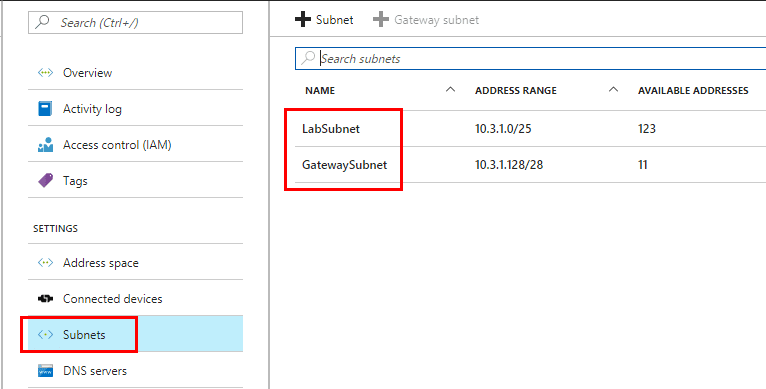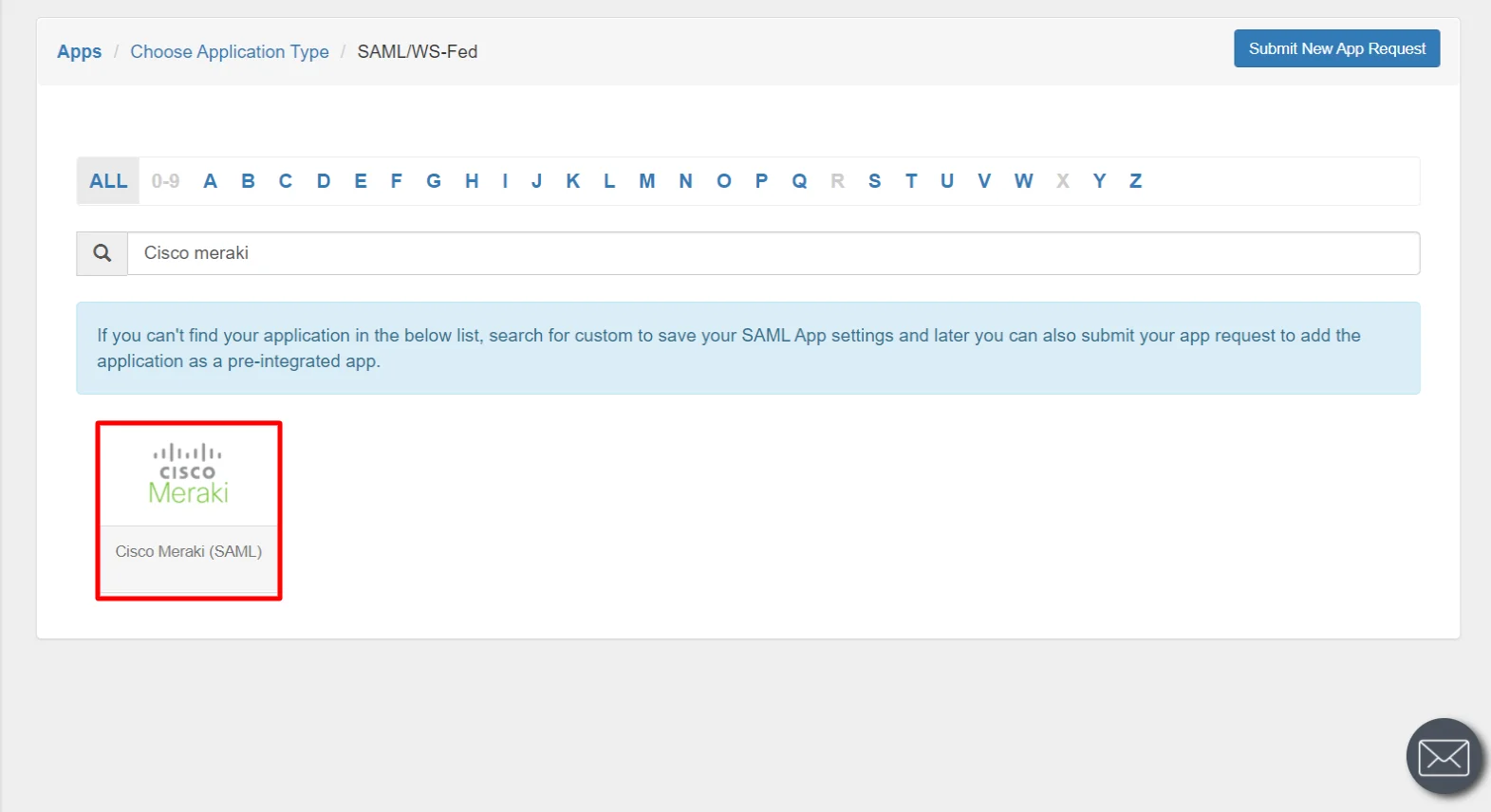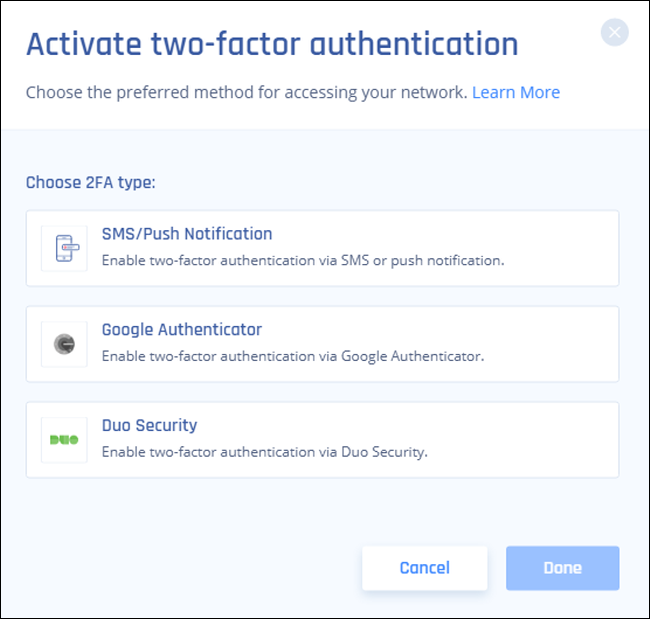- Trying to research some ways to potentially introduce 2-factor auth to our Meraki VPN. Don't know that it's possible as it would essentially boil down to having MFA on an on prem domain account. Save hide report. This thread is archived. New comments cannot be posted and votes cannot be cast.
- Setup VPN with 2FA? Posted by 4 years ago. Setup VPN with 2FA? Has anyone setup the Meraki MX devices using a 2FA authentication scheme? I was specifically looking at DUO which can use RADIUS, and MX devices can use RADIUS. Just wondering if anyone has.
Meraki Vpn 2fa Windows 10
Multiple Devices
Meraki Vpn 2fa Login
SAASPASSAuthenticator can be supported on multiple devicesincluding tablets like the iPad. You can have all your Authenticators on two or more devices. You can also control your multiple devices with device management. The ability to do a remote wipe is very handy especially if you have it on more than two devices. You can remotely remove your SAASPASS from a discarded or even (heaven forbid) a stolen device. Access to your SAASPASS is always protected by biometrics like Touch ID or your customizable PIN.
Log onto the Cisco Meraki Dashboard and navigate to Configure Client VPN. Select the option to enable the Client VPN Server. Set the Client VPN Subnet. This will be a unique IP subnet offered to clients connecting to the MX Security Appliance via a Client VPN connection. Specify the DNS servers.
Automatic Sync
If you have SAASPASS on multiple devices, your details will be automatically synced across them to eliminate the pain of multiple entries on all your devices.
Backup & Restore

You can create backups through establishingRecoveryand later on restore your SAASPASS. This comes in quite handy especially if you change or lose devices. It eliminates the pain of keeping notes and backup codes and then reestablishing them.
Change Display Name
You can change the display name of your Authenticator from within the Authenticator details.

This page provides instructions for configuring client VPN services through the Dashboard.
For detailed instructions on how to configure a client VPN connection on various client device platforms, please refer to:
Client VPN
The client VPN service uses the L2TP tunneling protocol and can be deployed without any additional software on PCs, Macs, iOS devices, and Android devices, since all of these operating systems natively support L2TP VPN connections.

Note: TLS (SSL) Client VPN is supported on the MX with AnyConnect. To learn more, see AnyConnect on the MX
Note: Linux-based operating systems can support client VPN connections as well, although third-party packages may be necessary to support L2TP/IP.
Note: Establishing a client VPN connection when the client is located on the LAN of the MX is unsupported.
Encryption Method
Client VPN uses the L2TP/IP protocol, with the following encryption and hashing algorithms: 3DES and SHA1 for Phase1, AES128/3DES and SHA1 for Phase2. As a best practice, the shared secret should not contain any special characters at the beginning or end.
Meraki Client Vpn Authentication
Owing to changes in the PCI-DSS Standard version 3.2.1, some auditors are now enforcing requirements for stronger encryption than the Meraki Client VPN default settings provide. Please contact Meraki Support if you need these values adjusted, but please be aware that some client devices may not support these more stringent requirements (AES128 encryption with DH group 14 - Required by PCI-DSS 3.2.1).
Client VPN Server Settings
To enable Client VPN, choose Enabled from the Client VPN server pulldown menu on the Security Appliance > Configure > Client VPN page. The following Client VPN options can be configured:
- Client VPN Subnet: The subnet that will be used for Client VPN connections. This should be a private subnet that is not in use anywhere else in the network. The MX will be the default gateway on this subnet and will route traffic to and from this subnet.
- Hostname: This is the hostname of the MX that Client VPN users will use to connect. This hostname is a DDNS host record correlating to the Public IP address of the MX. You can change this hostname by following the instructions here.
- DNS server: The servers VPN Clients will use to resolve DNS hostnames. Chose from Google Public DNS, OpenDNS, or specifying custom DNS servers by IP address.
- WINS server: If VPN clients should use WINS to resolve NetBIOS names, select Specify WINS Servers from the drop-down and enter the IP addresses of the desired WINS servers.
- Shared secret: The shared secret that will be used to establish the Client VPN connection.
- Authentication: How VPN Clients will be authenticated (see below).
- Systems Manager Sentry VPN security: Configuration settings for whether devices enrolled in systems manager should receive a configuration to connect to the Client VPN (see below Systems Manager Sentry VPN Security section).
Authentication
Meraki Client VPN uses the Password Authentication Protocol (PAP) to transmit and authenticate credentials. PAP authentication is always transmitted inside an IPsec tunnel between the client device and the MX security appliance using strong encryption. User credentials are never transmitted in clear text over the WAN or the LAN. An attacker sniffing on the network will never see user credentials because PAP is the inner authentication mechanism used inside the encrypted IPsec tunnel.
The authentication itself can be performed by using these three options: the Meraki cloud, RADIUS, or Active Directory. Sls pre collar with bellsugars legacy stables. Below, the three options are discussed.
Meraki Cloud Authentication
Use this option if an Active Directory or RADIUS server is not available, or if VPN users should be managed via the Meraki cloud. To add or remove users, use the User Management section at the bottom of the page. Add a user by clicking 'Add new user' and entering the following information:
- Name: Enter the user's name.
- Email: Enter the user's email address.
- Password: Enter a password for the user or click 'Generate' to automatically generate a password.
- Authorized: Select whether this user is authorized to use the Client VPN.
To edit an existing user, click on the user under the User Management section. To delete a user, click the X next to the user on the right side of the user list.
When using Meraki hosted authentication, the user's email address is the username that is used for authentication.
RADIUS
Use this option to authenticate users on a RADIUS server. Click Add a RADIUS server to configure the server(s) to use. Enter in the IP address of the RADIUS server, the port to be used for RADIUS communication, and the shared secret for the RADIUS server.
For more information on how to configure Radius authentication for Client VPN, refer to the documentation on Configuring RADIUS Authentication with Client VPN.

Note: If multiple RADIUS servers are configured, RADIUS traffic will not be load balanced.
Active Directory
Use this option if user authentication should be done with Active Directory domain credentials. You will need to provide the following information:
- Short domain: The short name of the Active Directory domain.
- Server IP: The IP address of an Active Directory server on the MX LAN or a remote subnet routable through AutoVPN.
- Domain admin: The domain administrator account the MX should use to query the server.
- Password: Password for the domain administrator account.
For example, considering the following scenario: Users in the domain test.company.com should be authenticated using an Active Directory server with IP 172.16.1.10. Users normally log into the domain using the format 'test/username' and you have created a domain administrator account with the username 'vpnadmin' and the password 'vpnpassword'.
- The Short domain would be 'test'.
- The Server IP would be 172.16.1.10.
- The Domain admin would be 'vpnadmin'.
- The Password would be 'vpnpassword'.
Refer to the Active Directory documentation for more information about integrating AD with Client VPN.
Meraki Two Factor Authentication
Note: At this time, the MX does not support mapping group policies via Active Directory for users connecting through the Client VPN.
Systems Manager Sentry VPN Security
When using Meraki cloud authentication, Systems Manager Sentry VPN security can be configured If your Dashboard organization contains one or more MDM networks. Systems Manager Sentry VPN security allows for devices enrolled in Systems Manager to receive the configuration to connect to the Client VPN through the Systems Manager profile on the device.
To enable Systems Manager Sentry VPN security, choose Enabled from the Client VPN server pulldown menu on the Security Appliance > Configure > Client VPN page. You can configure the following options:
- Install Scope: The install scope allows for a selection of Systems Manager tags for a particular MDM network. Devices with these tags applied in a Systems Manager network will receive a configuration to connect to this network's Client VPN server through their Systems Manager profile.
- Send All Traffic: Select whether all client traffic should be sent to the MX.
- Proxy: Whether a proxy should be used for this VPN connection. This can be set to automatic, manual, or disabled
When using Systems Manager Sentry VPN security, the username and password used to connect to the client VPN are generated by the Meraki cloud.
Usernames are generated based on a hash of a unique identifier on the device and the username of that device. Passwords are randomly generated.
Client VPN Connections
Meraki Vpn Radius Authentication
After configuring Client VPN and users are starting to connect, it may be useful to see how many and what client devices are connected to your network via Client VPN. To see connected Client VPN devices, navigate to Network-wide > Clients > click the dropdown icon on the Search clients.. Ethiopian apocrypha iiirejected scriptures. search bar > make sure to select Client VPN and either Online, Offline or both.
Group Policies
It is possible to manually apply group policies to clients connected via Client VPN. Group Policy applied to a client VPN user is associated with the username and not the device. Different devices that connect to Client VPN with the same username will receive the same group policy. For more help on assigning or removing group policies applied to a client, refer to the Creating and Applying Group Policies document.
Note: It is not possible to assign group policies automatically once a user connects to Client VPN.
FAQs Page
If further guidance is required, please feel free to visit the FAQs page built into Client VPN page (Security Appliance > Configure > Client VPN > FAQs). The FAQs contain answers and links (KB Articles and Dashboard pages) to the most common Client VPN inquiries. Below is a snippet of the FAQs page.
